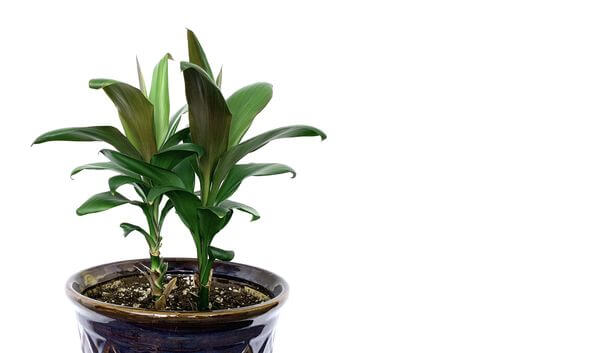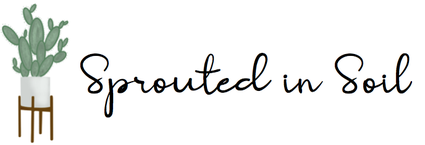Dracaena ‘Janet Craig’, also known by its scientific name, Dracaena deremensis or compacta, is a tough, compact tropical plant that makes for a great indoor houseplant. The Dracaena ‘Janet Craig’ plant is easy to care for, actually thriving on minimal care and even some neglect. Take a look at this care guide to bring the beauty of the tropics to your home!
Table of contents
Dracaenas are a genus of evergreen trees and shrubs that tend to have pointy, grass-like leaves. With their vibrant green coloring and ease of care, they are usually sold commercially as decorative indoor plants. Larger varieties are often used to decorate offices, shopping malls, and lobbies to provide natural textures in an artificial environment. If you would like something similar for your home, you may consider the Dracaena ‘Janet Craig’.
The Dracaena ‘Janet Craig’ plant is native to Africa, where wild specimens have been observed to reach a height of fifteen feet tall. Don’t expect your own Dracaena ‘Janet Craig’ houseplant to reach the same heights, however. Domestic varieties of the ‘Janet Craig’ compacta are likely to reach a maximum size of three to six feet, especially when they are raised in containers. It typically grows taller than it is wide, so space shouldn’t be an issue when it comes to raising this plant.
Quick Facts

- Common Name: Dracaena ‘Janet Craig’
- Scientific Name: Dracaena deremensis or Dracaena compacta
- Mature Size: 3-6 feet tall indoors
- Sunlight: indirect sunlight
- Water: when top half of soil is dry
- Soil: loose, well-draining soil
- Temperature: 60°F-75°F
- Propagation: stem cuttings
- Hardiness Zone: 10-12
Growth Pattern and Habits
The Dracaena ‘Janet Craig’ is relatively compact compared to other Dracaena subspecies. In its natural environment, it’s often dwarfed by surrounding flora. For this reason, this plant prefers shade, moderate temperatures, and low moisture. These preferences also make the Dracaena ‘Janet Craig’ very easy to care for.
As the Dracaena ‘Janet Craig’ grows, it will form a woody, cane-like stalk with its leaves “tufted” at the top. When it’s raised under near-perfect conditions, the Dracaena ‘Janet Craig’ may also bloom in the late spring or early summer months. The flowers tend to be large, showy, and fragrant, but they can also slow down leaf growth and produce an unpleasantly sticky sap. It’s perfectly safe to prune flowers as they appear to keep your plant healthy and clean-looking.
Sunlight
The Dracaena ‘Janet Craig’ plant needs light to trigger photosynthesis and subsequent growth. Too little can stop plant growth and cause the leaves to turn yellow. On the other hand, too much direct sunlight can burn the leaves and cause them to turn brittle and brown. Low light to bright, indirect sunlight is an ideal range for the Dracaena ‘Janet Craig’.

Because of its ability to thrive in low light conditions, the Dracaena ‘Janet Craig’ compacta makes an excellent office plant. However, you should note that there is a positive correlation between light exposure and growth rate.
The best place to keep this plant is near a window or in a shaded area of your outdoor garden. If your window of choice is too sunny, consider putting up a translucent curtain to filter sunlight.
Water
Controlled watering is key to high quality ‘Janet Craig’ plant care. The Dracaena ‘Janet Craig’ has a tendency to store water inside of its stalk and leaves, so it will survive if you forget to water it every once in a while. Ideally, you should only add enough water to soak the soil down to the roots, but not to the point where the soil becomes soggy. Then, wait until the top half of the soil has dried completely before watering again.
Expert Tip – When in doubt, remember that soil that’s “too dry” is better than soil that’s “too wet” when it comes to raising a Dracaena ‘Janet Craig’.
Alternatively, you can opt to water this plant via sub-irrigation. This method entails adding water to the saucer base rather than from the top of the pot. Using sub-irrigation allows the roots to draw up water from the bottom of the soil, which prevents the rest of the soil from becoming too soggy.
Soil
Well-draining soil is very important for raising a healthy Dracaena ‘Janet Craig’. A commercial potting mix marked as “well-draining” is the ideal Dracaena ‘Janet Craig’ soil. You can also start with your favorite general potting mix and add some pumice, orchid bark, or coconut coir to boost drainage capabilities. Whatever soil you choose, it should be paired with a pot with drainage holes.
Temperature and Humidity
The Dracaena ‘Janet Craig’ hails from the tropics, a region that tends to stay the same temperature all year long. Therefore, it does best within the narrow temperature range of 60-75°F. For most people, this means they will have to keep their Dracaena ‘Janet Craig’ indoors or in a greenhouse. Those living in USDA planting zones 10-12 may be able to raise this plant outdoors, as well.

Along with stable, moderate temperatures, a Dracaena ‘Janet Craig’ plant will require a relatively high humidity of 40-50% to mimic tropical conditions. In a domestic setting, you can achieve this by placing a humidifier or pebble tray of water nearby.
Alternatively, you can lightly mist the leaves with a spray bottle of distilled water every day or every other day, depending on your home’s natural humidity levels. Always be sure to wipe the excess water off of the leaves to prevent pests and diseases. If your Dracaena ‘Janet Craig’ is planted outdoors, aim to position it near a water feature.
Fertilization
The Dracaena ‘Janet Craig’ plant is used to the nutrient-rich soil of the rainforest, so fertilizing is a must. For best results, use a balanced, organic houseplant fertilizer diluted to half-strength and apply monthly during the spring and summer. This will replenish nutrients absorbed from the soil when the plant experiences active growth.
Avoid fertilizing in the fall and winter months when the plant goes dormant to prevent the over-accumulation of salt in the soil. Keep in mind that if you are growing your Dracaena ‘Jenny Craig’ indoors, you will likely note new growth even in the winter months. If this is the case, I suggest continuing to fertilize on a normal schedule.
Propagation
The easiest way to propagate the Dracaena ‘Janet Craig’ plant is with stem cuttings. For the best chances of success, you should propagate during the spring or summer when the plant is in its active growth phase. Also, you should only propagate healthy, mature plants, which are more likely to recover from being propagated.

When you cut a Dracaena ‘Janet Craig’ for stem propagation, the original plant will grow more than one new stem from the top of the cut stem!
For Dracaena ‘Janet Craig’ plant propagation, you will need a pair of sterilized shears, gardening gloves, rooting hormone (optional!) and a container of well-draining substrate.
- Using your sterile shears, harvest a stem cutting measuring 4-6 inches in length with a healthy amount of leaves.
- Use the same shears to strip off any lower leaves, keeping the upper leaves attached, to expose two to three inches of stem.
- Place the cutting on a clean, dry surface overnight to allow the severed end to callus over. Then, if you choose, dip the end in rooting hormone and plant the cutting cut-side down in your substrate of choice. You can choose to plant your Dracaena ‘Janet Craig’ directly in soil or in a clear jar with water covering only the exposed stem.
- Once you have planted your cutting (in soil or in water), place the container in a warm, shaded spot. If planted in soil, keep the soil consistently moist by misting daily or as needed. If kept in water, keep the water fresh and clean by changing once a week or as needed.
- After about four weeks, it should begin to form roots and show signs of independent growth, such as increased height or newly sprouted leaves. When you see these signs of growth, you can safely transplant the cutting to its permanent home and begin raising it as a normal Dracaena ‘Janet Craig’ plant.
Common Issues
Yellow Leaves
A healthy Dracaena ‘Janet Craig’ plant has bright green leaves. If the leaves of your plant are yellow, it can be a sign of poor lighting conditions or overwatering. First, evaluate your watering schedule to ensure you are not leaving your plant with “wet feet,” or waterlogged roots from overwatered soil. If your soil is too wet, stop watering or transplant to a pot of fresh soil, if necessary.
If your watering schedule is up to par, then your plant is probably not getting enough light. Simply moving it to a sunnier location can help your plant regain its normal coloring. Just remember that blasts of direct sunlight can cause the leaves to burn, so be prepared to provide shade or a filter.
Dry, Brown Leaves
A ‘Janet Craig’ compacta with dry, brown leaves can be a symptom of underwatering or sun scorch. Usually, the browning will start at the tips of the leaves if underwatering is the culprit. On the other hand, scorch marks will occur wherever the plant has been exposed to direct sunlight, not just the tips. Again, evaluate your watering schedule and your plant’s light exposure to see where the problem lies and adjust accordingly.
Pests
Like many other tropical houseplants, the Dracaena ‘Janet Craig’ can attract scale, mealybugs, or thrips. These are tiny insects that enjoy sucking the nutritious sap from your indoor plants. Sometimes, you may be able to see them with your naked eye. You can also find evidence of these pests in the form of webbing, discarded wings or exoskeletons, or coffee-like residue, which is the waste produced by the insects after feasting on your plant.

Most likely, you will know you have an infestation when your plant looks wilted, grows poorly, or otherwise doesn’t look its best.
If your plant has a pest infestation, quarantine it from your other houseplants and clean its leaves with a cotton ball dipped in alcohol. Do this daily until the infestation goes away and the plant’s condition has improved. You can also use a solution of organic neem oil as a treatment and preventative measure. Avoid chemical pesticides unless the infestation is severe.
Toxicity
The Dracaena ‘Janet Craig’ plant is known to be toxic to humans and animals, but especially cats. This is due to the presence of chemical compounds known as “saponins,” which are found in large quantities within the plant’s leaves. Ingesting a large amount of saponins can cause drooling, vomiting, upset stomach, or elevated heart rate. Fortunately, saponins are also naturally bitter and unpalatable, so your children or pets are unlikely to swallow enough of the plant to get very sick.
Saponins are also present in small amounts in common vegetables like spinach and chickpeas. Therefore, most healthy adults will be able to digest small amounts of saponins without any trouble. In most cases, symptoms of saponin poisoning will resolve on their own with rest and self-care. To keep your family safe, always supervise young children and pets around any toxic houseplants.
Conclusion
This absolutely sassy, tufted tropical plant is a must have when decorating your home. The Dracaena ‘Janet Craig’ is easy to care for and can tolerate a fair amount of neglect. Due to its easy going nature, the Dracaena ‘Janet Craig’ can be placed in a wide variety of low to medium light environments.
Enjoy this plant in a featured corner of a room, letting it grow tall and proud. Alternatively, the Dracaena ‘Janet Craig’ does well when pruned and kept low and compact on an office desk!




